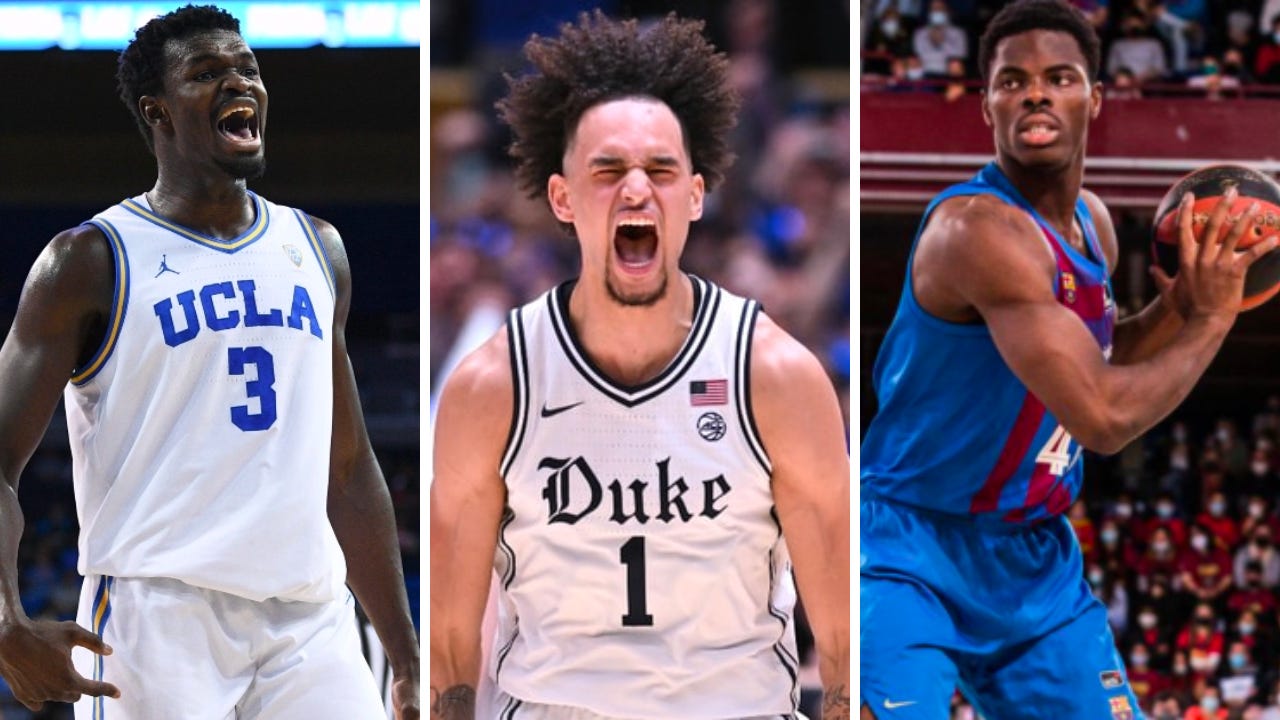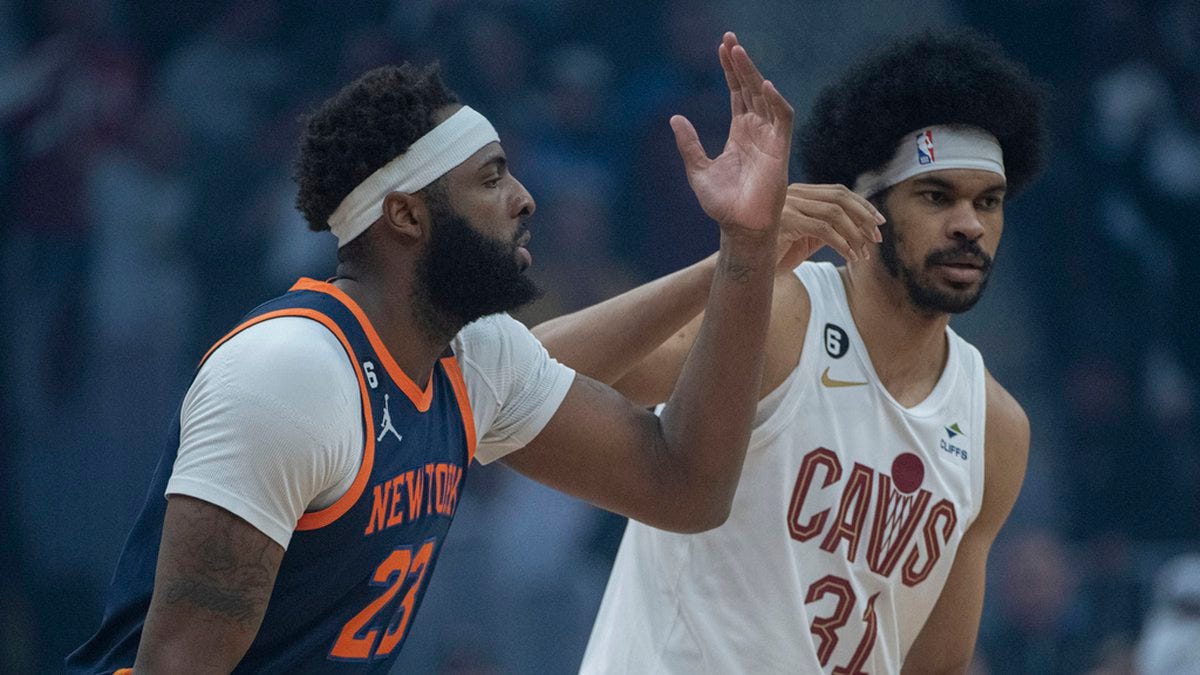Drafting Bigs Without Perimeter Skill
Analyzing the current playoff landscape of bigs could provide important lessons for how much we should value rim-bound big men in the upcoming draft
As a draft evaluator, I am constantly tormented trying to figure out just how, where, and when to value true 5-men. The guys I’m talking about are the ones who do not cleanly function when they touch the ball outside of ten feet on the offensive end of the floor. The guys who basically have to just dunk the ball whenever they catch it in order to provide value.
With the proliferation of perimeter skill over the last decade and an increase in small-ball lineups, rim-running big men are often seen as a highly-replaceable breed in today’s NBA. That doesn’t mean they bring no value — several playoff teams in 2023 have garnished their starting rotation with a screen-and-roll post who anchors the defense and spends most of their game in the dunker spot.
The issue is that there are so many players who fit into that category now that minutes for them are hard to come by. Those who are watching the 2023 NBA Playoffs have likely seen the Sacramento Kings abandon Alex Len in the late stages of the series, going without a post player in favor of Trey Lyles at the 5. The Los Angeles Clippers did the same with Mason Plumlee or Ivica Zubac, leaning into going incredibly small in the absence of their pair of star wings. Of course, Golden State has made a living over the last decade of abandoning a true 5 and going small in crunch time.
Beyond that, teams who try to play two bigs or non-shooting options together at the 4 and 5 get exposed in the playoffs. Three teams who have done so throughout the regular season — the Cleveland Cavaliers, Minnesota Timberwolves, and to some extent the Memphis Grizzlies — all exited in the first round. Their opponents clogged the lane off the second non-shooter and dared them to win games from the outside. They couldn’t.
The value of a big man who cannot shoot or reliably play the 4 is now in question. Versatility is a buzzword in the league. Playing a non-spacing big who doesn’t offer the ability to play another position can really hamstring a team’s versatility — both in terms of who else they play and what their offensive approach is going to be.
However, there are times when the impact provided by that big makes the loss of versatility worthwhile. Look at the Rudy Gobert-era Utah Jazz clubs. While they could argue the playoffs continued to expose his flaws, he dominated games throughout the regular season and was a dominant interior defender. This year, the New York Knicks saw Mitchell Robinson have a major impact in the first round despite really struggling whenever he touched the ball outside of eight feet. DeAndre Ayton, when engaged and physical, is an excellent two-way player for the Suns who doesn’t require a ton of touches on offense. Really good players always rise to the top.
Star players are clearly exempt from this conversation. Nobody is arguing that Joel Embiid, Nikola Jokic, or even Domantas Sabonis aren’t positives on their team. There are challenges or different rules that apply to building a roster, lineup, or scheme around them. But it’s not too difficult to do so, and incredibly worthwhile when done right.
The difficulty comes in projecting what those non-elite bigs look like: the players whose minutes might get crunched in a series because they aren’t stars, they aren’t good enough to build the entire rotation around, and their opponents force their hand by going smaller.
Earlier this weekend, I asked an audience on Twitter to name the amount of rotation-caliber big men who they don’t trust to do anything other than catch-and-finish. While I do push back on the inclusion or exclusion of a few names, there were far more mentioned who fit this bill than I originally anticipated.
Nearly half the league sports a big who fits this mold, both illustrating that the job can be done and that very few teams might be in the market for an option here. So many of them are playoff teams. Mitchell Robinson, Jarrett Allen, Clint Capela, Ivica Zubac, and to an extent Gobert all fit this mold. There were others mentioned like Steven Adams, Rob Williams or Nic Claxton, but I feel like there are some unique passing traits that give them at least passable impact when away from the rim.
These guys are all very good and provide major defensive impact to their teams. Their value is drawn out in their impact, not their versatility. What appears much more valuable are those alternative options at the 5 who can go smaller and matchup across the lineup — to provide both impact and versatility.
We’re seeing more of those long, lanky options who play the 4. Several of them are stars: Giannis Antetokounmpo, Jaren Jackson, Evan Mobley, Chet Holmgren, and perhaps Victor Wembanyama are all uniquely-built players who could play the 5 but are best served at the 4. That’s due to slender frame, diversity of impact on defense, and a desire to not tether the player to guarding screen-and-rolls all night.
The Bucks are ahead of the curb on how to construct a rotation with a unicorny 4-man like that. Brook Lopez, one of the most reliable stretch-5s in the league, helps accurately space the floor so that the non-shooting Giannis doesn’t pair with a center who allows the opponent to collapse on the lane. Cleveland and Memphis haven’t operated under those same rules, likely due to the hope that Jackson and Mobley become the shooting bigs on their rosters.
Do NBA teams want to continue to shrink their postseason lineup flexibility by drafting true 5-men who cannot do many different things on offense?
Last year, we saw three big men who do almost all of their offensive damage at the rim get drafted in the first round: Jalen Duren (Detroit), Mark Williams (Charlotte), and Walker Kessler (Utah). Duren and Williams brought hope for defensive versatility with their athletic tools, as they appeared capable of playing up at the level or switching onto the perimeter. The scheme versatility on defense might not fully offset the lack of it on offense, but it’s close.
Kessler, on the other hand, was a rim-bound big in Drop coverage. As he proved his rookie season, he’s dominant enough near the rim for his presence to be worth the positional anchoring… at least through the regular season.
This year, there are multiple bigs who could fall into that category. Dereck Lively from Duke, Adem Bona from UCLA, and James Nnaji from Barcelona all strike me as guys who provide zero perimeter skill or offensive versatility at the next level. The evaluation of their defensive impact (how worthwhile what they bring to the table is) and their defensive versatility (can they play in different schemes or with various types of teammates) will matter a ton in determining their draft position, the likelihood a team gambles on them, and what my overall evaluation of them long-term will be.
The playoffs, however, continue to push back on the notion that these players are necessary to win a championship. Even the dominant rim protectors like Gobert get played off the floor in some playoff series. Even the most versatile floor-spacing 5s like Brook Lopez get sent to the bench in favor of a small-ball lineup.
Within that context, we’re going to be dedicating some time this week to look at the least offensively flexible big men in this year’s class who could hear their names called in the first round: Bona, Lively, and Nnaji. Our scouting reports will focus not just on whether they are talented players and what they do well/ don’t do well, but on how they can derive value in the postseason.
I tend to believe that you take the guys who you believe are going to be the best players after the 20th or 25th pick in most drafts. Regardless of the versatility or schematics, getting return on investment of a playable guy in the pros is most important. We’ll probably test that theory this year, especially with a group of bigs so clearly stunted in terms of their offensive development like we have in 2023.





